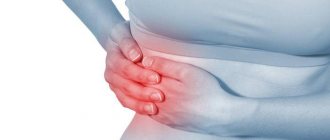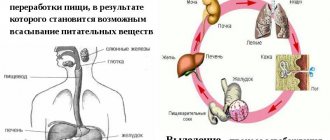Features of side pain when running
Quite often, when running, beginners who have just started running and cannot yet choose the optimal level of load for themselves get a sting in the side.
Yes, even professional runners may encounter this problem. The pain can be temporary, consisting of short-term colic and cramps in the side. Experts call this pain diaphragmatic spasms. Its source is the muscles located between the abdomen and chest, and the cause is a lack of oxygen. The causes of pain can be associated with both banal violations of running technique and serious health problems. Pain can occur on both the right and left sides. If your left side hurts when running, this may be due to a spleen that is full of blood, or poorly developed muscles because the chest does not take in enough air.
Get a little rest
Oleg Babchin, founder and senior coach of the Second Wind school:
It is necessary to be able to analyze any pain sensations, except muscle ones, to identify truly serious ailments or temporary inconveniences. If your left side hurts, it is likely that it is the pancreas or spleen. As a rule, this is a temporary spasm that can be leveled out by simple palpation or temporary rest, after which you can continue training. It’s a completely different matter if the right side is sick - it’s the liver and its adjacent parts, the bile ducts. In this option, you should be more careful, but there are possible ways to solve the problem, as with the right side. There can be several causes of pain: late meals, problems with pain-signaling organs, incorrect running pace, in which the body cannot cope with an excess of lactic acid.
Causes
Before training, you must follow the nutritional rules. Even a small snack before starting a workout will 100% provide the athlete with short-term or long-term pain syndrome. Therefore, consuming any food at least two hours before training is strictly prohibited. It is especially important not to consume high-calorie foods with a lot of fiber and fat.
Poor stamina
In this case, the rule “The slower you go, the further you go.” In order to get good stamina, you need to be patient. Experienced athletes recommend running long and slow. It is strictly forbidden to exhaust yourself to the point of exhaustion. It's easier to use long tempo workouts than to run a marathon in as little time as possible.
Bad warm-up
If an athlete has colitis in the right side, then such a manifestation signals a poor-quality warm-up. Warming up before training is very important. Before running, a person's muscles are not elastic. Therefore, they need to be warmed up and kneaded. It is important to note that the warm-up should not be long. If it lasts more than twenty minutes, then the person may not have the strength to do the main run.
The recommended duration should be no more than 5-10 minutes. It is strictly forbidden to start warming up with stretching. Many athletes begin to lunge and roll from foot to foot. It is generally accepted that such exercises help to warm up as much as possible. But they actually increase the likelihood of injury.
Proper breathing helps reduce the load on the cardiovascular system. It increases oxygen access to all organs of the body. At the same time, it helps to increase the effectiveness of the training process. It is worth considering that the respiratory process is individual for each person. To date, a large number of universal breathing techniques have been developed.
Excessive physical activity negatively affects human health. Instead of a beneficial effect, irreparable harm can be caused to the body. Before starting a workout, it is necessary to warm up. This will prevent unwanted injuries, muscle strains, and joint dislocations. Intense training through strength does not build endurance, but on the contrary, it increases the load on the cardiovascular system. As a result, the athlete quickly gets tired. Long running provokes pain.
Bad warm-up
How to prevent
The best option is to prevent the occurrence of pain in the side. When starting your workout, make sure you follow the rules below:
- Breathe with your belly;
- From the first seconds of running, control your breathing;
- Keep your body upright. Correct posture is necessary for full and proper breathing;
- Try not to drink while exercising if possible. In exceptional cases, it is permissible to drink 2-3 small sips;
- Before jogging, warm up the muscles of the whole body well for 5-10 minutes;
- After eating, at least 3 hours should pass before you go for a run.
Heavy loads, unprepared body, improper warm-up or lack thereof
When the body is in a state of calm, it does not need active blood circulation. In a calm state, blood is a reserve, the main part of which is located in the peritoneum and chest cavity, that is, in the liver and spleen.
When we start running, we increase the load on the entire body, and the entire reserve goes into circulation in order to meet the needs of actively working muscles. Blood fills the organs located in the abdominal cavity, and its outflow does not keep pace with the inflow. In other words, the liver and spleen swell due to the rush of blood and put pressure on their membranes, which are entirely permeated with nerve cells. This is why we feel that our side hurts when running.
To avoid this problem, follow these recommendations:
- Before running, be sure to do a short warm-up. This will give the body the opportunity to adapt and tune in to the load, prepare the muscles for work and increase blood flow especially before activity.
- Beginners to running are advised to start with short distances and short workouts. It is recommended to increase the load gradually.
- When pain in the side makes itself felt, begin to gradually reduce the pace and switch to a sports step.
You cannot stop abruptly - this applies to all cases. Slow down gradually and then stop completely.
- Try to relax. Do slight bends to the sides, while not forgetting to solve deeply.
- Using three fingers, press on the area of pain - this will help reduce discomfort.
Incorrect breathing technique may be the answer to the question of why your side hurts while running. It may be too frequent, intermittent or irregular. If a sufficient amount of air does not enter the diaphragm, spasms begin and, accordingly, pain.
There is only one solution to this problem - train yourself to breathe correctly. You need to inhale through your nose, exhale through your mouth. Take a deep breath in with full lungs and a smooth exit.
Why it stings during time: reasons
The explanations why your right or left side hurts when you run are quite simple:
In right and left
So, why does it sting in the right or left side during or after running? If you feel a stabbing pain while walking or running quickly, then know that if the right side pierces when running, it’s the liver , and if the left side pierces, it’s the spleen .
When the body is not exposed to stress, part of the blood is in reserve and does not circulate through the blood vessels. The main volume of circulating blood occurs in the chest and abdominal cavities. Physical activity causes a redistribution of blood flow in the body in favor of working muscles. However, it should be noted that unlike muscles, which are ready to start working immediately, the autonomic functions that ensure their work (such as blood circulation and breathing) require some time to “break in.”
When other motivation no longer works
In case of heavy loads without preliminary warm-up, “reserve” blood begins to enter the bloodstream, without having time to quickly flow away from the liver and spleen. Reserve blood is the blood that is deposited in the lower extremities, i.e. the body distills as much blood as is needed at the moment to meet its needs, and the stored blood is mobilized only as needed .
As a result, blood fills the abdominal organs, increasing their size and creating pressure on the membranes . The membranes contain pain receptors, which signal stabbing pain.
The pain begins in the chest at the level of the heart, but on the right side - this sensation appears during intense exercise, is localized in the lower part of the chest on the right or left, and immediately goes away when the person slows down or stops. It is associated with excessively strong tension of the liver ligaments and a sharp change in the blood supply to the internal organs . It does not pose any danger and does not require treatment.
There is also the possibility that your abdominal muscles are not elastic enough , increased tension will be transferred to the diaphragm, straining the ligaments that attach it to the skeleton, which, in turn, will lead to tingling in the side and spasms in the peritoneal area.
If you get a tingle in your side, know that you will have to either slow down your running significantly or stop it altogether and it is best to train your abdominal muscles. The articles will help you with this: Analysis of the most effective abdominal exercises and How to do the plank exercise correctly: analysis of the technique with photos .
If it starts stabbing during a long run, then most likely it is a spasm of the diaphragm due to shallow breathing . Then you need to learn to breathe depending on the running speed : either 3-2 (three steps - inhale, two steps - exhale), or 2-2. Inhale through your nose, exhale through your mouth. Try to exhale sharply and all the way to the end, so that when you inhale, part of the air itself is poured into the lungs, without effort.
When running, it can also hurt on the left between the 5-6 ribs after prolonged physical exertion . Or give it to the shoulder blade. This is most likely myalgia . The source of pain in myalgia is a spasm that affects the muscles and provokes pinching of the nerve endings.
A similar situation can arise due to being in one position for a long time, diseases accompanied by infection (ARVI, influenza), inflammation or those of a chronic nature, chronic fatigue, stress, muscle sprains and strains during physical activity, bruises, injuries, hypothermia, radiculitis, immobility, etc.
Heavy loads, unprepared body, improper warm-up or lack thereof
- You need to set yourself a clear goal. Otherwise, you don’t have to start jogging;
- Then you need to analyze and evaluate your physical fitness. If a person is prohibited from any physical activity, then it is not recommended to start jogging;
- You should buy special sportswear and running shoes. Shoes with soft soles can prevent impact stress on your joints;
- The best places for running are parks or stadiums. Walking dogs and driving cars is prohibited in such places. In winter, the paths are cleared of snow;
- Before choosing a route, you must walk it. You should make sure that the athlete is not in danger anywhere;
- It is not recommended to run on asphalt surfaces. In this case, there is a strong load on the spine and joints;
- While running, you need to relax and adjust to the rhythm of your breathing;
- The running pace should gradually increase;
- While jogging, you need to breathe through your nose. When breathing through the mouth, there is a lack of oxygen and excessive overload of the body; After a run, you need to drink a mug of water. This will help restore the body's water balance;
You need to set yourself a clear goal. Otherwise, you don’t have to start jogging; Then you need to analyze and evaluate your physical fitness. If a person is prohibited from any physical activity, then it is not recommended to start jogging; You should buy special sportswear and running shoes.
Shoes with soft soles can prevent impact stress on your joints; The best places for running are parks or stadiums. Walking dogs and driving cars is prohibited in such places. In winter, the paths are cleared of snow; Before choosing a route, you must walk it. You should make sure that the athlete is not in danger anywhere;
It is not recommended to run on asphalt surfaces. In this case, there is a strong load on the spine and joints; While running, you need to relax and adjust to the rhythm of your breathing; The running pace should gradually increase; While jogging, you need to breathe through your nose. When breathing through the mouth, there is a lack of oxygen and excessive overload of the body; after a run, you need to drink a mug of water. This will help restore the body's water balance;
How to eliminate pain while running?
Change running to brisk walking; Restore your breathing with deep breaths. This breathing helps normalize blood circulation. At the same time, the outflow of blood clots from the internal organs of a person is accelerated. These also include the liver and spleen, where the pain syndrome is localized;
An effective method is to draw in the abdomen to its limit. Under the pressure created by the abdominal muscles, the liver is pressed against the spine. With this procedure, excess blood clots are squeezed out of the organ; To eliminate the pain effect, athletes perform 5-6 bends towards their toes. But if this method does not help and the stabbing syndrome does not go away, then you need to press on the place where the pain is located with four fingers. Pressure must be maintained until the pain completely passes.
If pain in the side still appears, despite the fact that all running rules have been followed, then it must be eliminated. To do this, first of all, you need to slow down your running pace, and best of all, change it to fast walking. After this, you should try to restore your breathing through deep breaths. They will normalize blood circulation and accelerate the outflow of blood from all internal organs, including the spleen and liver.
You can also try to pull your stomach in as far as possible several times. Thus, under the pressure of the abdominal muscles, the liver is pressed against the spine and excess blood is squeezed out of it. You can do several bends towards your toes. If the pain does not stop, then you need to press four fingers on the place where it is localized and hold until it goes away.
- Change running to brisk walking;
- Restore your breathing with deep breaths. This breathing helps normalize blood circulation. At the same time, the outflow of blood clots from the internal organs of a person is accelerated. These also include the liver and spleen, where the pain syndrome is localized;
- An effective method is to draw in the abdomen to its limit. Under the pressure created by the abdominal muscles, the liver is pressed against the spine. With this procedure, excess blood clots are squeezed out of the organ;
- To eliminate the pain effect, athletes perform 5-6 bends towards their toes. But if this method does not help and the stabbing syndrome does not go away, then you need to press on the place where the pain is located with four fingers. Pressure must be maintained until the pain completely passes.
Eating before exercise
When you have eaten, the body is busy digesting food and spends all its energy on it. The stomach ferments food, and the liver neutralizes toxins. Moreover, the heavier the food, the more difficult it is for the body. If you then start running, it cannot withstand the double load and reacts to this with pain in the side.
The solution to this problem is the following:
- If you plan to run in the morning, it is recommended to have breakfast an hour before your run. If breakfast was heavy, the body needs to digest the food, and for this it needs 1-2 hours.
- Before training, you should not eat heavy foods: fatty, fried, spicy, salty. It is recommended to include light snacks in your diet - something protein-rich, for example, or a vegetable salad.
- Control the load during the training process. If you have eaten heavily, do not run at full speed. It is better to focus on running technique and proper breathing.
Go one step
Yana Khmeleva, founder and head coach of the Bestia.club running school:
The side usually hurts in beginners. When we just start exercising, our untrained heart is small and there are not enough capillary vessels. During training, the network of capillaries grows. When we run, lactate is produced. It enters the blood. The blood is cleared of lactate through the liver. The capillaries cannot cope with the amount of blood containing lactate, so a spasm occurs and a stabbing sensation in the side .
If your side starts to hurt, you need to take a step and dose the load. Don't speed up too much at first. You should improve your physical fitness gradually.
What should I do to prevent the pain from recurring?
Special rules must be followed:
- Experienced athletes always start running with a warm-up. You need to take it seriously and perform the exercises consistently. A properly performed warm-up can help warm up your muscles before exercise. With the help of exercises, muscles are prepared for full physical activity.
- It is necessary to monitor load control. For example, for beginners, the maximum volume would be a fifteen-minute run at medium speed. Over time, you can increase physical activity. After 10-20 workouts, pain in the side will disappear completely.
- It is not recommended to run on a full stomach.
- You need to watch your posture. A straight back is the key to the necessary deep breathing. In this case, compression of the diaphragm is eliminated.
Running with pain in your side is strictly prohibited! It is necessary to stop and eliminate the unpleasant sensation. Otherwise, jogging will not be beneficial. This condition will only worsen the athlete’s health.
Experienced athletes always start running with a warm-up. You need to take it seriously and perform the exercises consistently. A properly performed warm-up can help warm up your muscles before exercise. With the help of exercises, muscles are prepared for full physical activity. It is necessary to monitor load control.
For example, for beginners, the maximum volume would be a fifteen-minute run at medium speed. Over time, you can increase physical activity. After 10-20 workouts, pain in the side will disappear completely. It is not recommended to run on a full stomach. You need to watch your posture.
First of all, you need to strictly adhere to the special rules. You should always start running with a warm-up. Moreover, you need to take it very seriously, carefully performing each exercise. Warming up helps warm up your muscles before running. In this way, they can be prepared for a full load. Also very important is constant monitoring of loads.
For example, if a person has not exercised for a long time, then fifteen minutes of running at medium speed will be enough for him. If you gradually increase the load, then after ten or twenty workouts the pain in your side will completely disappear. And the most important rule: you can’t run with pain in your side, you need to stop and try to eliminate it. There will be no benefit from such a run, but there will be more than enough harm.
Painful sensations when running in untrained people occur after 10-20 minutes of running. In well-trained people, pain can be triggered by intense training, when the body is already exhausted, and reacts to this with spasms and cramps.
If you experience discomfort, consider the following tips:
- If you feel pain in your left side when running, that is, the spleen is making itself felt, you should not stop right away. Press your left elbow to your side and slow down a little.
- If this doesn't help, take a deep breath so that your lungs take in a lot of air and press on your internal organs. As you inhale, hold your breath for 5-10 seconds and continue running. When you feel that you can no longer hold your breath, exhale slowly.
https://www.youtube.com/watch?v=EsBHgysPn60
To treat pain in the left side, it is recommended to repeat these steps 3-5 times. But if pain in the right side makes itself felt while running, then this is unlikely to help. In this case, it is worth taking into account the following recommendations:
- Take a deep breath and exhale, try to relax and calm down.
- Slow down your running pace, then walk (smoothly), stop, bend over and touch your toes with your hands.
- You can wear a wide belt around your waist, and if pain in your right side makes itself felt, tighten it tighter.
- Pull your stomach in - this will increase muscle tone. Take a couple of breaths in and out through your nose.
All these procedures must be carried out cyclically. After a few workouts, you will notice that the pain when running no longer bothers you.
Relax and breathe deeply
Denis Vasiliev, coach of the running club Runlab Running Laboratory, St. Petersburg:
Pain in the right hypochondrium is a common problem when running, especially for beginners. There can be many reasons. I will list a few main ones.
Load on the liver. Remember when your last meal was, what you ate before running and the day before. If it was a heavy meal, and even eaten immediately before running, then the reason is most likely clear. If pain occurs regularly, you may need to reconsider your diet. To prevent pain from taking you by surprise during competitions, I advise you to take a couple of no-shpa or spasmalgon tablets with you.
Curvature of the bile ducts. In medical terminology, the diagnosis sounds different, but the essence does not change: there is a violation of the outflow of bile. But this is, rather, not a pathology, but a structural feature of the gallbladder. If you are afraid that pain may strike you during an important race, then I recommend taking a course of a choleretic herbal mixture well before the start. This is a simple, affordable and at the same time effective remedy. Before using medications, consultation with a specialist is recommended.
Load on the heart. The systemic circulation supplies our organs and tissues with oxygenated blood. In simple terms, the heart works intensively, pushing a large volume of blood to the organs, including the liver. But the liver cannot cope with such a volume of blood. In this case, the best remedy is to reduce your running pace and intensity accordingly.
In all three cases, it doesn’t hurt to relax, take a few deep breaths and exhales, involving the diaphragm in the breathing process. If pain occurs regularly, then of course you should consult a doctor.
Diseases of the liver, pancreas or gall bladder
With an inflamed pancreas, you can feel a sharp pain in your side. With hepatitis, the liver increases in size, and you can feel how your right side hurts when running. In case of gallbladder problems, stones block the gallbladder. Such pains can make themselves felt even in a calm state, but with loads they will increase.
Follow these guidelines:
- Before you start actively running, it is recommended to consult a specialist and conduct an examination of the abdominal cavity. If there are no contraindications, feel free to start exercising.
- Stick to proper nutrition, try to avoid fatty, fried and other unhealthy foods.
Insufficient muscle preparation
If you don’t do a good warm-up before running, your body will experience stress. In a calm state, blood circulation and oxygen saturation of all body systems are established. Without preliminary preparation of the body for physical activity, normal blood circulation and oxygen delivery are disrupted. The spleen and liver immediately react to this - having increased in size, they compress the nerve endings.
Health problems
If you prepare incorrectly or run incorrectly, health problems can arise. If the left side hurts, then the pain is localized in the spleen, if the right side hurts, it is in the liver. As a result, the organs become filled with blood and increase in size. Due to the pain receptors located in the capsules, an unpleasant sensation begins to arise.
Pain in the left side may indicate congenital diseases of the spleen. After blood flow enters the organ, a person feels severe acute pain in the lower abdomen. Such pathologies are most often found in the female half of the population. Complications can also cause abscesses, cyst formation, atrophy and excessive increase in size of the organ. While running with pain, a heart attack or volvulus of the spleen may occur.
In the right side, pain can be localized in people suffering from hepatitis. Such patients have an enlarged liver. Health problems may occur in people with gallstone disease. The gallbladder in such people is enlarged. Stones begin to clog the ducts, and the bile becomes viscous.
Sports running is very beneficial for the body. But this sport should be taken very seriously. Improper preparation or implementation of such a procedure can cause health problems. Before training, it is recommended to warm up to increase muscle elasticity.
Poor warm-up, too intense exercise, low endurance
At rest, approximately 60-70% of the total blood volume circulates in the human body.
The rest is deposited in organs and tissues: for example, in the spleen. With a sharp increase in load, reserve blood quickly enters the circulation. The liver increases in volume and puts pressure on the hepatic capsule, which is equipped with a huge number of nerve endings. As a result, pain occurs in the right hypochondrium - the so-called hepatic pain syndrome. This phenomenon is typical for healthy, non-smoking people with a low level of fitness (remember school races: probably after the first lap around the stadium the girls were clutching their right side).
Sometimes the pain occurs in the left side - this is how the spleen reacts to a sharp increase in blood volume.
Immediately after eating food, the body devotes all its energy to digesting it. The stomach is enlarged in volume, working on fermentation and grinding. The liver is actively involved in neutralizing toxins, its blood vessels are dilated.
The heavier the food, the more the gastrointestinal tract has to work. Forced running causes an additional rush of blood, increasing the already considerable volume of the organ. The result is still the same - pain in the right side.
What should I do to prevent the pain from recurring?
Knowing why side pain occurs when running, you also need to consider the symptoms that indicate that the discomfort will soon make itself felt.
Depending on the characteristics of the pain and the conditions in which it appears, the following symptoms are distinguished:
- Weak endurance of the body, high loads, lack of warm-up or improper warm-up, lack of preparation for physical activity.
- Breathing problems (if you have difficulty breathing when running, your breathing becomes intermittent and uneven).
- Recent pre-run food intake.
- Chronic diseases that make themselves felt during physical activity.
Pain occurs not only among those who have just started running or are overweight. This also happens among professional athletes who are accustomed to prolonged exercise.
What to do
Consult your doctor before starting exercise. Do an ultrasound of the abdominal organs and make sure that you have no contraindications to exercise. Try to stick to a healthy diet: eat more vegetables, fruits, cereals, steam or bake more. Fatty and fried foods have never benefited anyone.
If you feel pain already during exercise, slowly take a step and take a few deep breaths. Finish your workout smoothly, and be sure to consult your doctor afterward. And don’t experiment with self-administration of medications!
We hope that knowing why your side hurts when running will prevent you from making many mistakes and keep you healthy. The main thing is to be able to hear the alarm bells of your body and promptly eliminate their cause.
Pain in the side after running
Pain after running often occurs for the same reasons as during jogging. Quite often the factor of sudden cessation of jogging plays a role, that is, excessive load and sudden stop. You shouldn't test your body this way. As you plan to finish your workout, gradually transition to a slower run or faster walk.
If discomfort while running still makes itself felt, follow these recommendations:
- Take a deep breath, relax your muscles and calm your breathing. It is important to try to relax your entire body.
- If you feel pain in your side, experts recommend pressing your fingers on the area causing discomfort and remaining in this position until the pain goes away.
- If this does not help, gently massage the side and allow the liver or spleen to relax.
- Inhale deeply and exhale as slowly as possible through pursed lips.
If you experience pain after running due to low fitness, try replacing running with brisk walking first. This way you will prepare your body, and over time it will not feel discomfort even during active exercise. Remember that everything should be gradual.
Massage your side as you exhale
Sergey Sorokin, co-founder and head coach of the Jaxtor marathon club:
The liver has no nerve endings, so the liver does not hurt. When a lot of blood enters this organ and less comes out, the liver enlarges and begins to put pressure on those places where nerve endings are present. For example, the fascia (sheath) of the liver has a mass of nerve endings, and when the liver becomes enlarged, painful sensations occur.
To stop the pain in your side, you need to take a deep breath and, while exhaling strongly, thoroughly massage the liver area with strong pressure. By doing this, you stimulate blood flow and the pain will go away.
On the eve of the start, avoid eating fatty, fried foods, because... it overloads the liver, which needs to process lactic acid during running.











